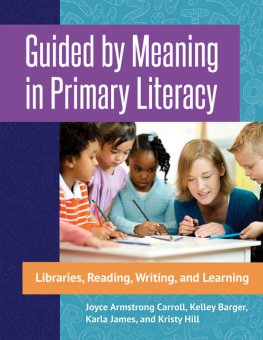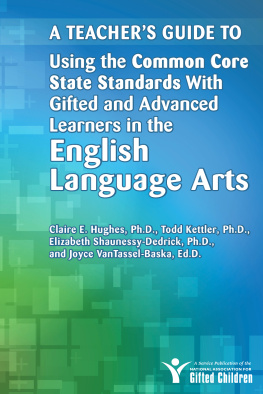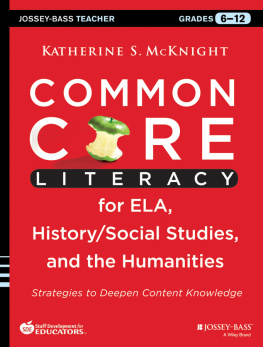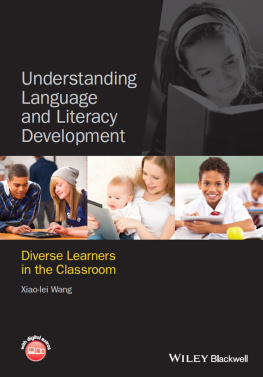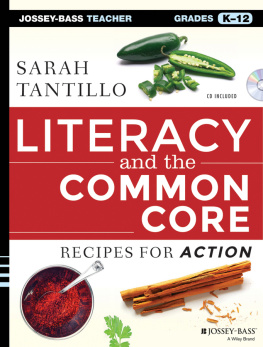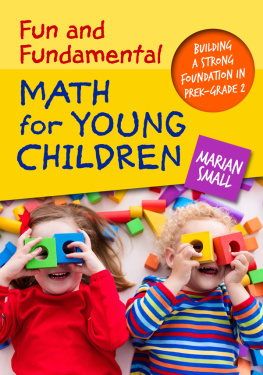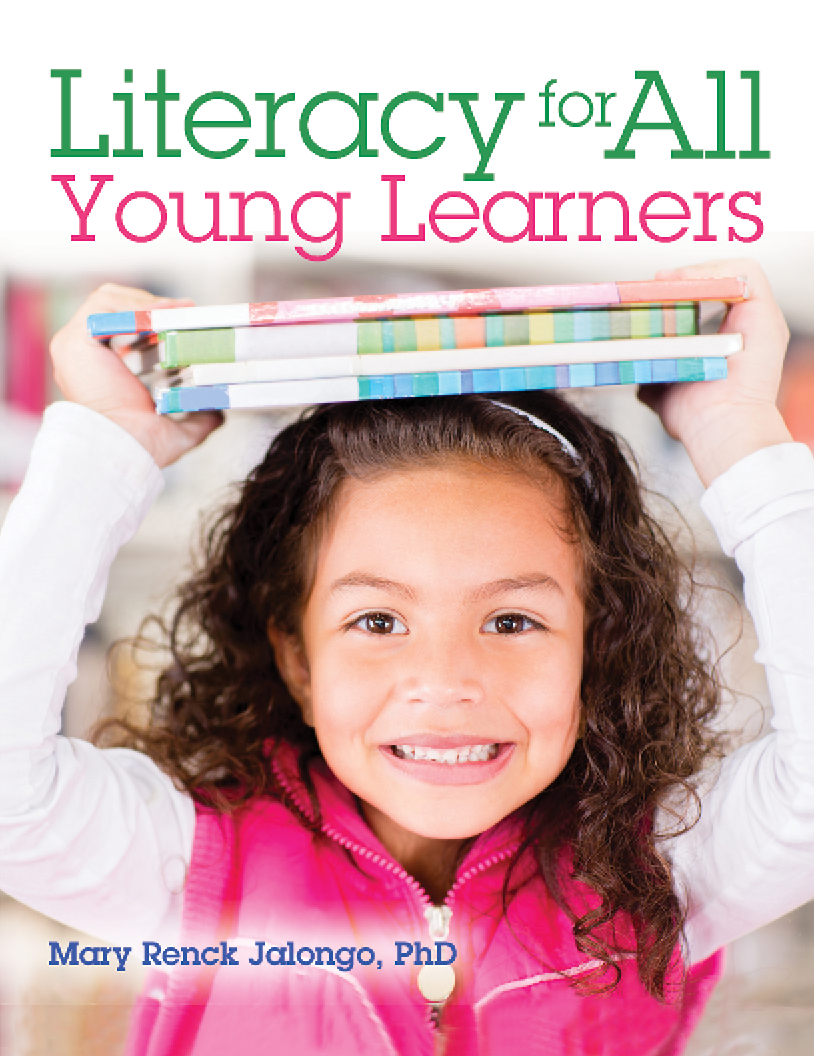Contents
Strategy 1
Word Walls and E-Sorts to Build Vocabulary
Strategy 2
Using Childrens Names as a Starting Point for Alphabet Learning
Copyright
2015 Mary Renck Jalongo
Published by Gryphon House, Inc.
P. O. Box 10, Lewisville, NC 27023
800-638-0928; 877-638-7576 (fax)
Visit us on the web at www.gryphonhouse.com.
All rights reserved. No part of this publication may be reproduced or transmitted in any form or by any means, electronic or technical, including photocopy, recording, or any information storage or retrieval system, without prior written permission of the publisher. Printed in the United States. Every effort has been made to locate copyright and permission information.
Cover photograph courtesy of Shutterstock.com 2015.
Library of Congress Cataloging-in-Publication Data
Jalongo, Mary Renck.
Literacy for all young learners / by Mary Renck Jalongo.
pages cm
Includes bibliographical references and index.
ISBN 978-0-87659-568-8
1. English language--Study and teaching--Foreign speakers--Activity programs. I. Title.
PE1128.A2J343 2015
428.0071--dc23
2015003788
Bulk Purchase
Gryphon House books are available for special premiums and sales promotions as well as for fund-raising use. Special editions or book excerpts also can be created to specifications. For details, call 800-638-0928.
Disclaimer
Gryphon House, Inc. cannot be held responsible for damage, mishap, or injury incurred during the use of or because of activities in this book. Appropriate and reasonable caution and adult supervision of children involved in activities and corresponding to the age and capability of each child involved are recommended at all times. Do not leave children unattended at any time. Observe safety and caution at all times.
Preface
My first experience with a young English language learner occurred when I was a kindergartner. An Italian boy with olive skin and glossy black curls arrived at our school wearing red leather fisherman sandals. At recess, three boys began to make fun of him, saying, Hes wearing girls shoes! Girls shoes! Girls shoes! The boys continued to pursue him until the newcomer stood behind the school building, back against the wall, with tears streaming down his flushed face. I told the boys to stop but they ignored me. Finally, I resorted to throwing sand and they ran off, threatening to tell the principal. What happened was much worse: They told Miss Klingensmith. She was the person I pretended to be when I played school; she was the one who would inspire me to pursue a career in early childhood education. Above anyone else at that school, I did not want to disappoint Miss Klingensmith. She listened as I explained what had happened, and to her everlasting credit, my only punishment was to promise never to throw sand again.
Over the years, I have amassed many more experiences with young children who did not speak English and were newcomers to a school: as a Future Teachers of America volunteer; as a new teacher; as a volunteer for the Teacher Corpsa sort of stateside version of the Peace Corps; in a community preschool that included the children of migrant farm workers; and as a doctoral student in a university-based preschool that included the children of international students, many of whom did not speak English. As a college professor, I have had the opportunity to work with college students with dual majors in education and Spanish. They completed their student teaching in an elementary school where English was the language of instruction in the morning and Spanish was the language of instruction in the afternoon. During the summer, I supervised their internship in a public school in Mexico. Thus, young children whose first language is not Englishand their teachershave been a significant part of my professional career. This book has given me the opportunity to synthesize what Ive learned from personal experience and from research.
Acknowledgments
Books are the culmination of many years of professional work, extensive reading, problem solving, reflective practice, and writing for other purposes. I would like to thank everyone who has contributed to this process throughout my career: young children and their families, my college students and professional colleagues, and my teachers and mentors.
Two people who made a large contribution to this book are doctoral candidates and graduate assistants at Indiana University of Pennsylvania, Elizabeth Octave and Nicole Olbrish. They prepared the Common Core State Standards grid that is included in each activity, reviewed websites and apps, suggested additional childrens books, and made suggestions about the letters to families. Marianela D. Davis translated the letters to families into Spanish. Their work is very much appreciated and has enhanced the quality of this book.
M. R. J.
Introduction
Who is the young English language learner? The designation English language learner (ELL) is commonly used to refer to children who do not have English as a first language and are working to acquire proficiency in English. What are the realities for the young child who arrives at a school or center with little or no proficiency in English? The first, frequently overwhelming, experience is that the language of communication and instruction will be one that the child does not understand. Unless large numbers of children speak the same first languagesuch as Spanish-speaking children in Miami or Albuquerquechances are that the child will be immersed in English from the very first day. While peers or an occasional community volunteer may speak the childs first language, there may not be anyone to interpret or translate. As a result, it will be up to the regular teacherpreschool or primaryto offer a curriculum that meets the developmental needs of all learners.
Most of the time, the amount and kind of support offered to ELLs are entirely up to the teacher. If teachers make effective use of evidence-based strategies, English language learners will become valued members of the classroom community, will acquire a positive first impression of education, and will make the most of educational opportunities. If, on the other hand, teachers decide that a child with limited English proficiency is an inconvenience and take a sink-or-swim approach, then the child will feel like an outsider, question his competence, and have diminished opportunities to learn.
Misconceptions about
Second-Language Learning
Supporting the young ELL relies on a combination of accurate information, pedagogical skills, and a commitment to supporting every childs learning. Often, misconceptions about young English language learners get in the way of making early childhood classrooms effective learning environments for them.
English language learners are not just found in urban settings. ELLs can be found in all types of early childhood settings. The cultural and linguistic diversity of the children enrolled in early childhood programs has increased dramatically. According to the National Clearinghouse for English Language Acquisition, between 1997 and 2008 the number of English language learners enrolled in U.S. public schools increased by 51 percent. Today, one in nine students in the United States does not speak English as her first language; by 2025, the Pew Hispanic Center predicts that one in four students will be an English language learner.
Young children do not just pick up language; they need intensive and intentional instruction. Although young childrens facility with languages can be impressive, language is first heard as a jumble of sounds. If you doubt this, just turn to a television or radio channel that broadcasts in a language you do not speak. At first, you cannot tell what pieces of that flow of speech represent a word, a phrase, or a sentence. Learners of a new language need comprehensible input , or an understanding of what they hear in a meaningful context. The more meaningful input a child is exposed to, the more progress the child can make in a



